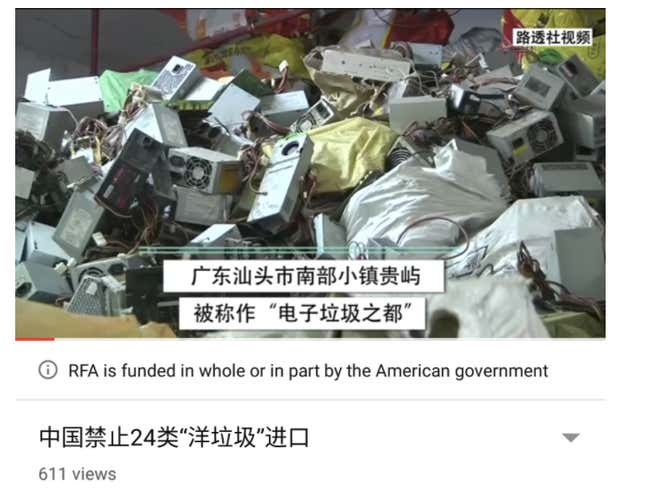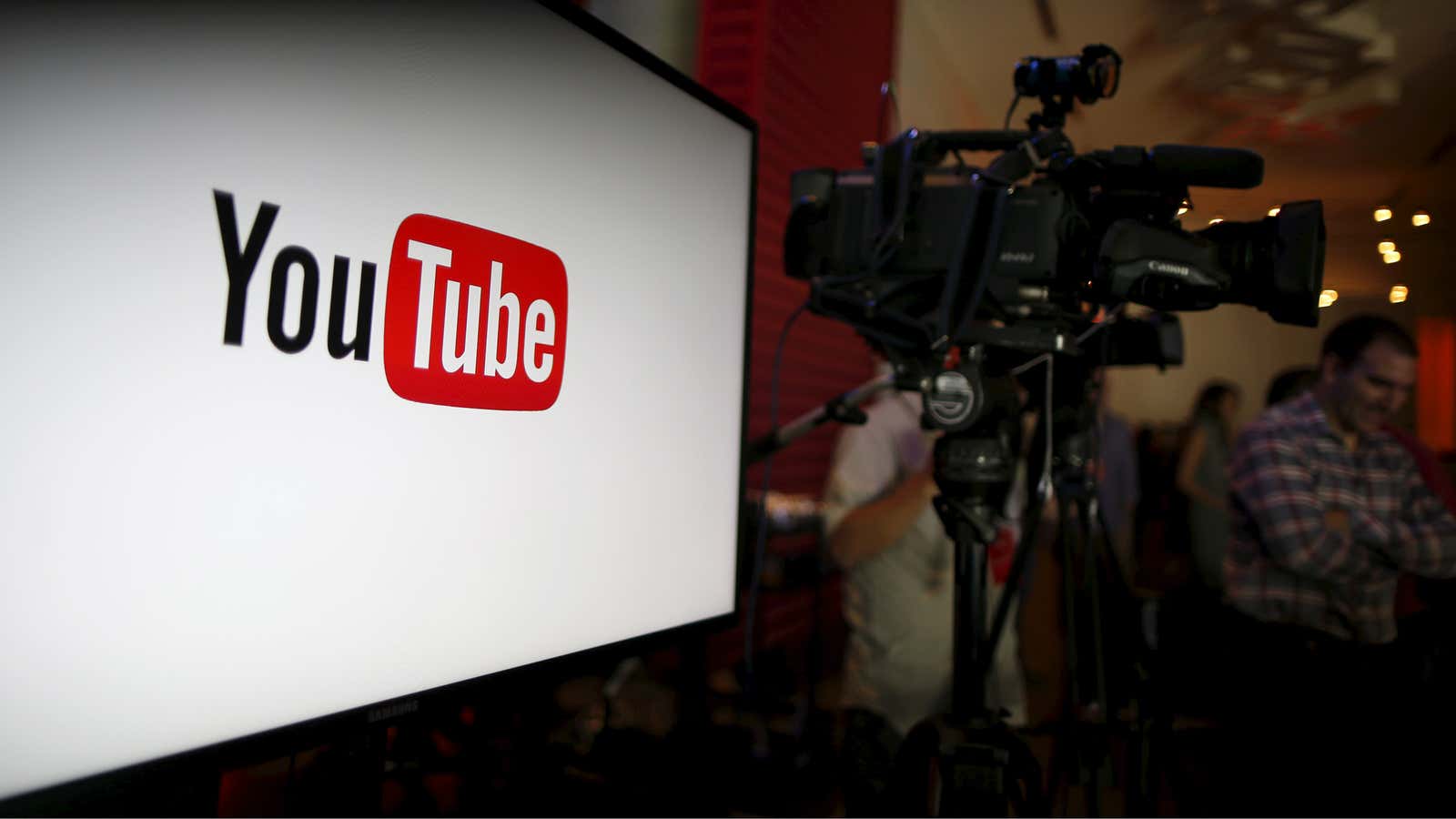YouTube has a a new feature that will label certain news channels that have received funding from governments, a change that comes as social networks wrestle with how to contain the spread of misinformation online. It already looks set to be a contentious move.
In a blog post Feb. 2, YouTube states it introduced the new feature in order to improve transparency. “Our goal is to equip users with additional information to help them better understand the sources of news content that they choose to watch on YouTube.” It will only affect users located in the US. The company provided a screenshot from a video by Radio Free Asia, which is funded by the US’s Broadcasting Board of Governors, as an example of what the labels will look like.

What’s contentious is that the YouTube notice looks set to apply both to news outlets that are publicly funded but nevertheless maintain editorial independence from the government of the day, and those media that take both funding and editorial direction from a government.
YouTube doesn’t directly name any other channels that will be subject to the notice, but the Los Angeles Times has reported that US-based public broadcaster PBS will be among the channels whose readers will see a line informing readers of its government funding. That will put it in the company of Russia’s RT and China’s New China TV (a division of state-media outlet Xinhua), according to the LA Times. Both of them are known for promoting the official views of their respective governments.
YouTube didn’t immediately respond to queries about the move Monday.
PBS has contested the labeling. “PBS and its member stations receive a small percentage of funding from the federal government; the majority of funding comes from private donations,” it said in an emailed statement to the LA Times. “More importantly, PBS is an independent, private, not-for-profit corporation, not a state broadcaster. YouTube’s proposed labeling could wrongly imply that the government has influence over PBS content, which is prohibited by statute.” PBS did not reply to Quartz’s email sent outside of normal business hours.
There are several other media outlets that could see the notice placed on their videos—such as NPR, Al Jazeera, China’s CGTN, and the BBC.
In response to a query from Quartz, NPR said in a statement it was a strong believer in transparency, but disagrees its programming should be labeled under the new policy. The broadcaster said it relies on a mix of funding, including member station fees, corporate sponsorship, and gifts, and that “less than 1% of NPR’s annual operating budget comes in the form of grants from CPB [Corporation for Public Broadcasting] and federal agencies and departments.”
“We appreciate the challenges YouTube may be facing, but what they’re doing is not the answer,” said NPR. “We have reached out to them to correct this mislabeling. NPR is not a government agency or state-sponsored broadcaster. NPR is an independent nonprofit media organization… Most importantly we take every measure possible to ensure our editorial integrity: funding is separate from the editorial decision making process in our newsroom; editors make their own choices about what stories to cover and how to report them.
The BBC said in a statement that it “will ascertain from YouTube what this new initiative will mean for us.”
Al Jazeera and CGTN did not respond to Quartz’s requests for comment.
The new feature will only affect a tiny percentage of the content that’s viewed on YouTube. Yet it still highlights the difficulties that YouTube and its ilk face as they fight misinformation and foreign influence. Some regulators and members of the public might be clamoring for social media to crack down on propaganda. But for a global business like YouTube to define what is and is not propaganda isn’t easy. Including US publicly funded broadcasters is leaving YouTube open to complaints of lack of judgment—but not including them would leave them open to complaints of bias.
Update, Feb. 7: This post was updated with comment from NPR and the BBC.
